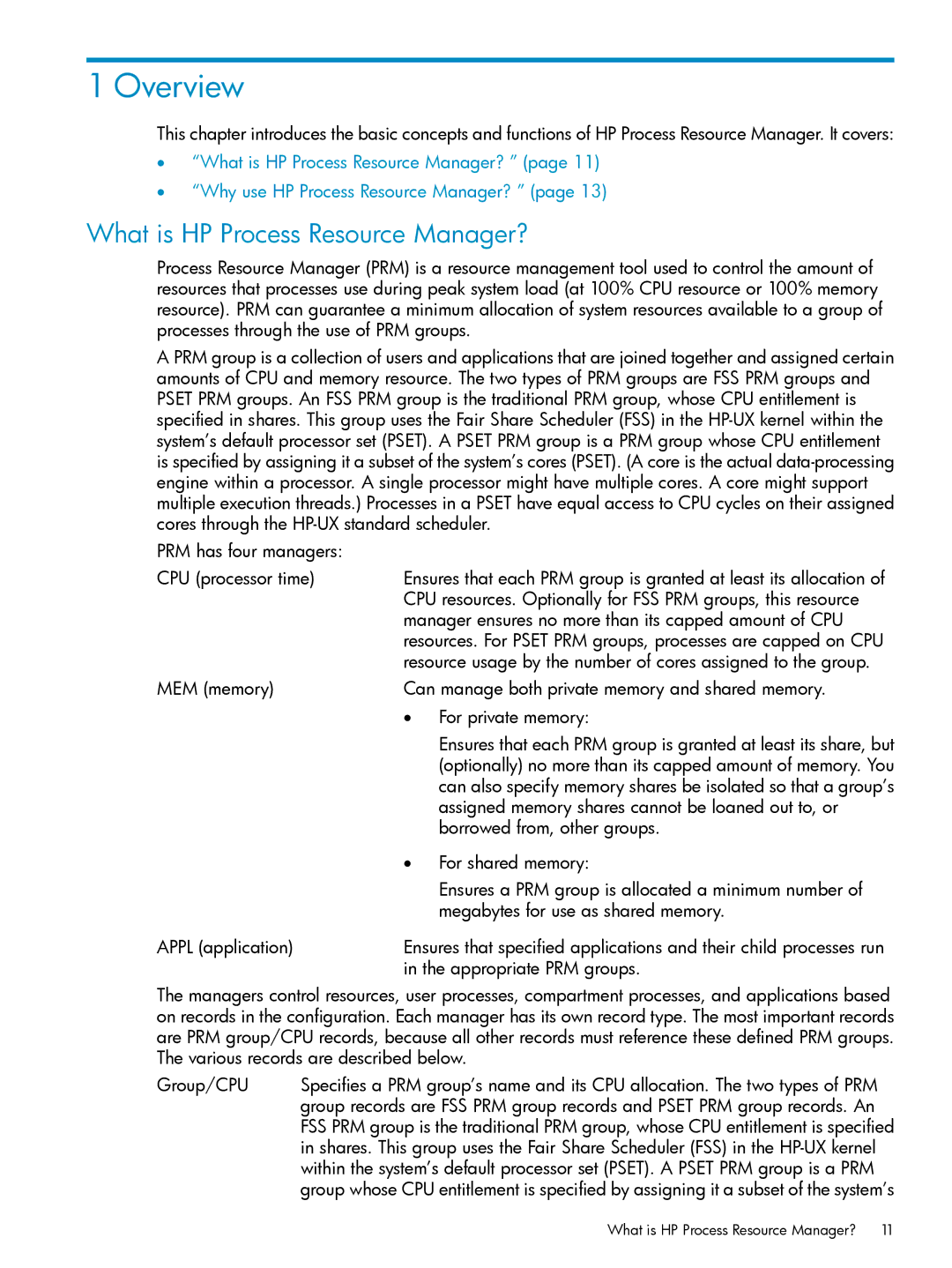1 Overview
This chapter introduces the basic concepts and functions of HP Process Resource Manager. It covers:
•“What is HP Process Resource Manager? ” (page 11)
•“Why use HP Process Resource Manager? ” (page 13)
What is HP Process Resource Manager?
Process Resource Manager (PRM) is a resource management tool used to control the amount of resources that processes use during peak system load (at 100% CPU resource or 100% memory resource). PRM can guarantee a minimum allocation of system resources available to a group of processes through the use of PRM groups.
A PRM group is a collection of users and applications that are joined together and assigned certain amounts of CPU and memory resource. The two types of PRM groups are FSS PRM groups and PSET PRM groups. An FSS PRM group is the traditional PRM group, whose CPU entitlement is specified in shares. This group uses the Fair Share Scheduler (FSS) in the
PRM has four managers: |
|
|
CPU (processor time) | Ensures that each PRM group is granted at least its allocation of | |
| CPU resources. Optionally for FSS PRM groups, this resource | |
| manager ensures no more than its capped amount of CPU | |
| resources. For PSET PRM groups, processes are capped on CPU | |
| resource usage by the number of cores assigned to the group. | |
MEM (memory) | Can manage both private memory and shared memory. | |
| • | For private memory: |
|
| Ensures that each PRM group is granted at least its share, but |
|
| (optionally) no more than its capped amount of memory. You |
|
| can also specify memory shares be isolated so that a group’s |
|
| assigned memory shares cannot be loaned out to, or |
|
| borrowed from, other groups. |
| • | For shared memory: |
|
| Ensures a PRM group is allocated a minimum number of |
|
| megabytes for use as shared memory. |
APPL (application) | Ensures that specified applications and their child processes run | |
| in the appropriate PRM groups. | |
The managers control resources, user processes, compartment processes, and applications based on records in the configuration. Each manager has its own record type. The most important records are PRM group/CPU records, because all other records must reference these defined PRM groups. The various records are described below.
Group/CPU | Specifies a PRM group’s name and its CPU allocation. The two types of PRM |
| group records are FSS PRM group records and PSET PRM group records. An |
| FSS PRM group is the traditional PRM group, whose CPU entitlement is specified |
| in shares. This group uses the Fair Share Scheduler (FSS) in the |
| within the system’s default processor set (PSET). A PSET PRM group is a PRM |
| group whose CPU entitlement is specified by assigning it a subset of the system’s |
What is HP Process Resource Manager? 11
